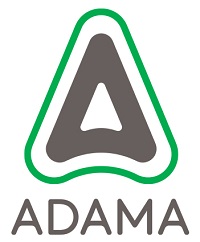How to improve an already good product is no simple task, but it’s one Adama is seeking to do with prothioconazole by investing in unique formulation technology. CPM finds out more.
“Improved rainfastness, coupled with the quicker uptake, helps improve efficacy.”
By Mike Abram
Innovation in crop protection isn’t solely about finding new active ingredients. How those active ingredients are formulated, in many ways, is the key to their efficacy and environmental footprint.
And while many of the agchem sector’s R&D companies have formulation departments that aim to create the best formulation for their new discoveries, that’s no guarantee it can’t be improved upon. It’s an area where generic manufacturer Adama is betting its multi-disciplinary R&D teams can improve on the original – now off-patent – products with its own unique patented formulation technology.

Adama’s investment in formulation technology aims to optimise the performance of existing active ingredients, explains Andy Bailey.
A couple of the initial products created by Adama’s in-house R&D department are fungicides containing 250 g/l prothioconazole: Soratel and Magan. Both have been formulated using Asorbital technology to improve uptake and other properties of the active ingredient.
“Adama’s investment in formulation technology aims to optimise the performance of existing active ingredients,” explains Andy Bailey, Adama technical specialist for cereal fungicides in the UK.
“Our Asorbital technology is not the same as all the other prothioconazole formulations – it’s been developed by our formulation team in Israel and incorporates patented technology for enhanced performance.”
The unique formulation comprises a special solvent system and an in-built adjuvant, which improves uptake of the fungicide into the leaf and enables systemic movement of the active ingredient through the plant to the site of action. It also provides improved rainfastness.
At least that’s the theory. But to prove whether this happens in practice, Adama commissioned an independent contract research organisation, Biotransfer, to test leaf uptake and migration against key wheat disease, septoria. The trials investigated the performance of Adama’s prothioconazole formulation compared with the market-leading standard product.
Based in Montreuil near Paris, the laboratory’s expertise embraces molecular biology and plant physiology, as well as plant pathology, and uses 350m2 of controlled condition growth chambers, complemented by 80m2 of high light intensity chambers to reflect a field situation as closely as possible.
The experiments were conducted as follows: a standardised amount of each of the prothioconazole formulations was applied to the basal parts of 60 wheat leaves, with the apical parts of the leaves left untreated.
At five time points following application – 6, 12 and 24 hours – for the leaf uptake experiments, and then after three and seven days for the migration tests, the apical parts of 12 wheat leaves for each time period for each product were removed to stop the migration of the product from the treatment area into the untreated apical part of the leaf.
Basal leaf parts were then washed to remove any remaining active ingredient on the surface of the leaf, before both basal and apical segments were inoculated with septoria and incubated under saturated, humid conditions, perfect for disease development.
Relative biological efficacy reflecting the quantity of active ingredient present in each part of the leaf was then used to measure effectiveness. Less disease in the basal part of the leaf indicated better penetration into the leaf, while lower disease levels in the apical part indicated more effective migration from the basal part into the apical part of the leaf.
Not surprisingly, the longer the chemical had to penetrate the leaf, the higher the efficacy against septoria 21 and 28 days after inoculation. This rose from around 25% control in leaves treated for six hours to 70% control after 24 hours.
There were also differences between the two formulations, especially when assessed 28 days after inoculation. At each of the three time points for this assessment – 6, 12 and 24 hours after application – there was a statistically significant difference in control of around 20% in favour of Adama’s Soratel formulation compared with the market leading standard.
“These trials show the uptake of this formulation is quicker and more effective against septoria in comparison,” concludes Andy.
A similar pattern emerged with the assessments of the apical parts of the leaf, with Soratel showing increased control of septoria after three and seven days after application at both assessment timings.
For example, three days after application, Soratel was giving 73% control of septoria 21 days after inoculation, compared with just 50% control for the competitor product. The difference between the formulations had narrowed to 8% when there was a longer seven-day window for movement of the chemical into the apical part of the leaf and control was assessed after 28 days, but that was still a statistically significant difference, according to Adama.
Andy’s conclusion from this set of experiments is the novel formulation is offering better protection against septoria in non-treated leaf areas thanks to its superior movement within the leaf.
Results from both experiments show how the formulation technology is helping to optimise the active’s performance, he adds. “Getting the product into the leaf quickly and then quicker migration through the leaf is helping to optimise control and get the active to where it’s needed to fight infections.”
A second set of trials with Biotransfer looked at both formulations’ rainfastness. In these trials 18 wheat plants were treated with each product at the two- to three- leaf stage, with 40mm rainfall simulated either one or three hours after treatment. The plants were inoculated with septoria 24 hours later, with disease levels assessed after a further 21 days.
After both one hour and three hours, there was an improvement in the level of septoria control seen with Soratel compared with the competitor product, says Andy.
“A lot of growers will say there’s a rain shower around the corner in the UK sometimes, so improved rainfastness, coupled with the quicker uptake, helps improve efficacy.”
Taking those improvements out into the field, Adama also commissioned trials with various independent trials contractors across its’ European Maritime zone, which includes the UK, to compare Soratel with the market leading prothioconazole product against various diseases in wheat, barley and oilseed rape.
In the majority of these trials, there was a statistically significant difference in favour of Soratel, he says. For example, against septoria in wheat, across the zone there was a significant difference in 10 out of the 18 trials. Two of those trials were carried out in the UK, showing an average 3% difference in control between the two products.
The formulation performed even better against yellow rust, with 12 out of 14 trials showing significantly better control for the generic product. Of these, four were in the UK, two of which showed a statistical difference in favour of the generic product and an overall 5% improvement in control.
Perhaps the two diseases where there was the largest difference in performance were fusarium in wheat and sclerotinia in OSR, adds Andy. In the 12 trials against fusarium across the region, seven showed a significant difference in favour of Soratel. In the UK, it was three out of four, with an average improvement in control of 13%. For sclerotinia, there was an 18% improvement in control, with three out of the five trials showing a significant increase.
“Fusarium is challenging to control for a number of factors, including achieving sufficiently good coverage of the target area, but it’s one where we’ve shown a benefit from making an improvement to the formulation of an active ingredient,” suggests Andy.
To further understand the exact reasons behind that better control, Adama has commissioned further work with Biotransfer to explore how the benefits of Asorbital formulation technology can influence the control of fusarium, he adds.
Research briefing
To help growers get the best out of technology used in the field, manufacturers continue to invest in R&D at every level, from the lab to extensive field trials. CPM Research Briefings provide not only the findings of recent research, but also an insight into the technology, to ensure a full understanding of how to optimise its use.
CPM would like to thank Adama for sponsoring this Research Briefing and for providing privileged access to staff and material used to help bring it together.
This article was taken from the latest issue of CPM. Read the article in full here.
For more articles like this, subscribe here.
Sign up for Crop Production Magazine’s FREE e-newsletter here.




